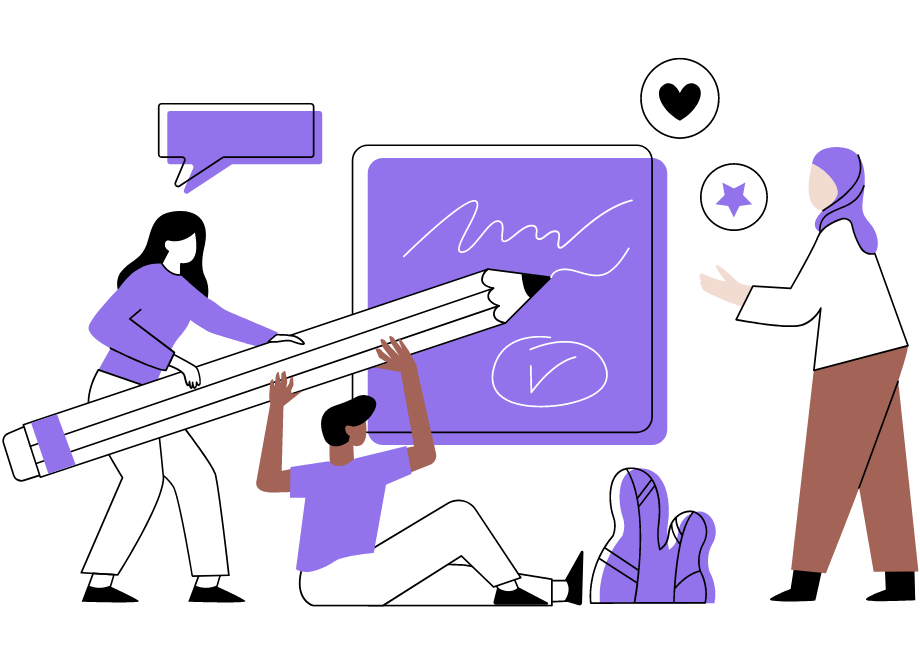
Many of today’s leading software development agencies are realizing the benefits of diversifying their teams, but they are also finding that it’s not an easy feat.
Although prioritizing diversity is an opportunity for companies to grow their talent pool by recruiting from a wide range of backgrounds and experiences, too few companies are successful at it.
This article explores why diversity matters in engineering teams, examines possible issues faced by engineers with minority backgrounds, and offers suggestions for making sure you build a diverse engineering team.
So let’s dive in!
Table of Contents
Start with diverse leadership
If you want to embrace diversity within your development agency, you first need to make some changes at the top level of your company’s structure – specifically, within your leadership team.
For example, if your development agency has a monolithic (white and male) leadership team, which is often the case in the tech industry, it’s time to make some changes.
And according to statistics, this can only benefit your company.
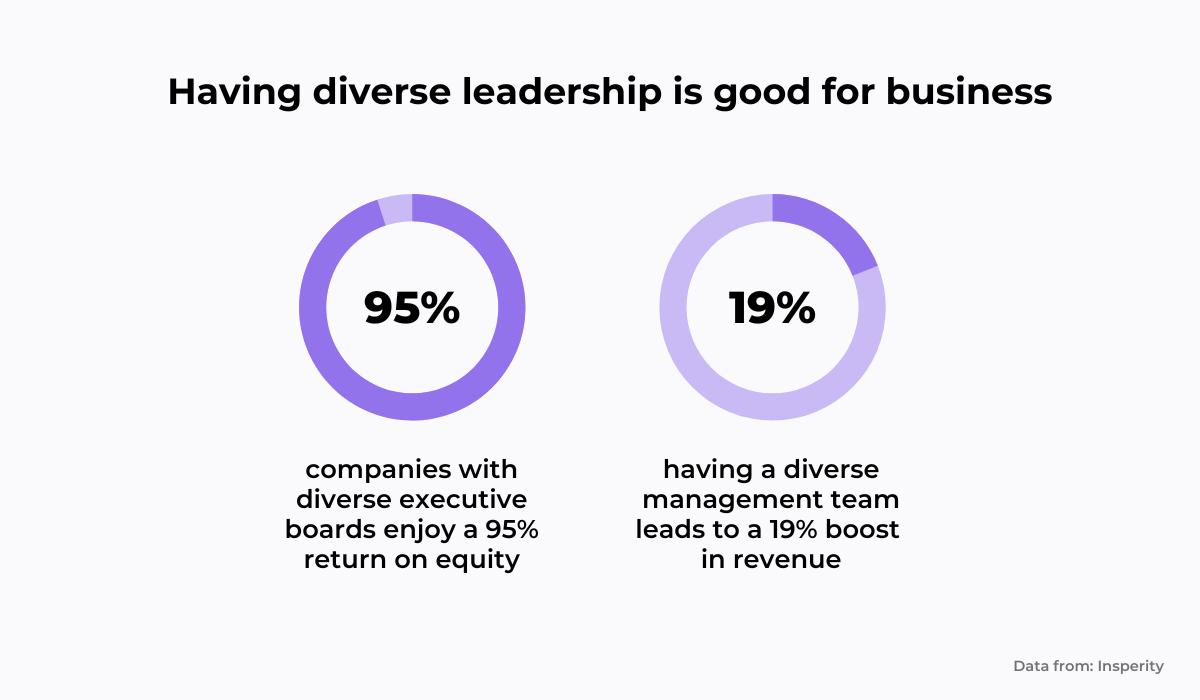
Therefore, it would be advisable to make sure that at least two people on your leadership team are from an underrepresented group.
For example, Netflix’s workforce is increasingly diverse – women make up the majority of their workforce (51.7%), and 51.1% of leadership positions are occupied by women.
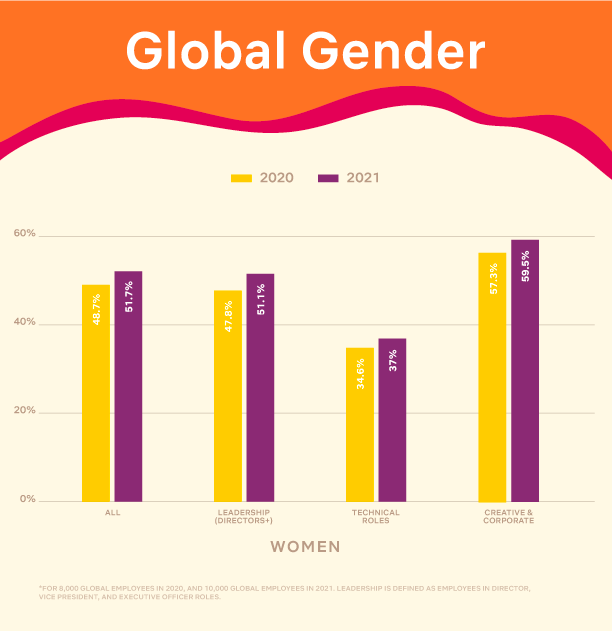
That is a good example of how companies can start from the top and foster a more inclusive environment for everyone in their company.
That said, Netflix is not alone in this effort: other companies like Google, Facebook, and Twitter have minority leaders in their ranks.
But, if you really want to create a culture of diversity and inclusion, you should make your leaders, regardless of their backgrounds, role models for the rest of the employees.
For example, Sundar Pichai, the CEO of Google and Alphabet, has been publicly committed to diversity, promoting it by speaking up about it in interviews, blogging, and starting diversity and inclusion initiatives company-wide.
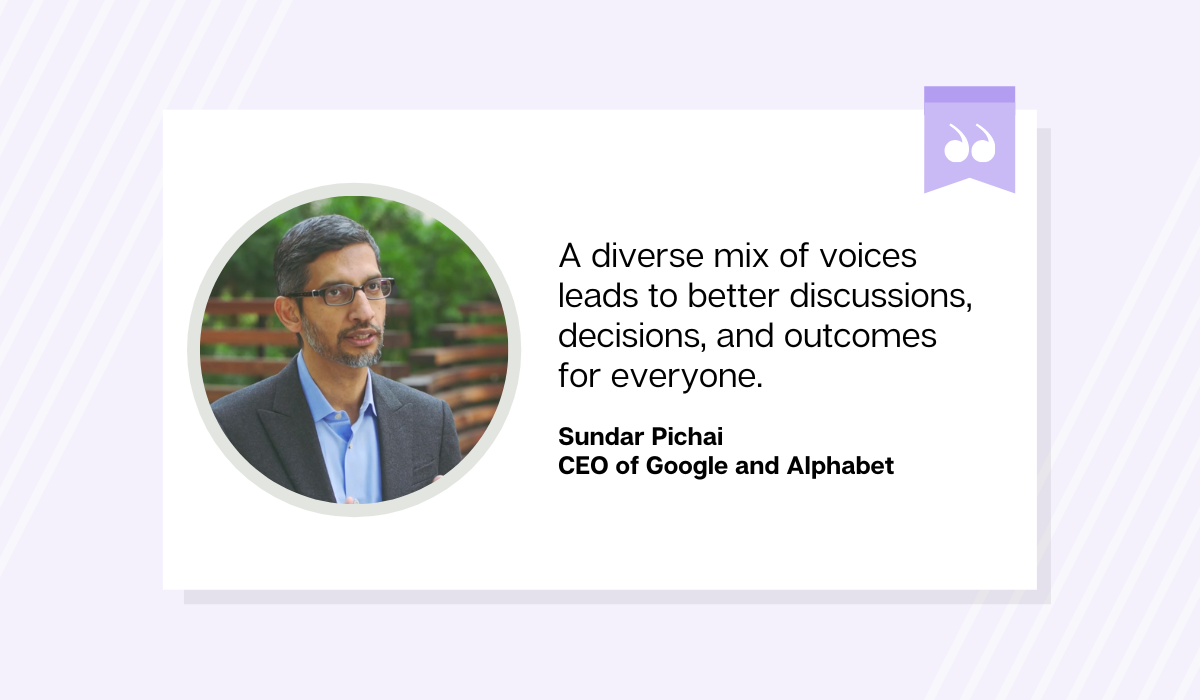
Additionally, back in 2017, he fired James Damore, an engineer who wrote a 10-page memo in which he claimed that women are underrepresented in tech due to biological differences, and posted it to an internal Google message board.
Sundar Pichai later stated in his blog that Damore’s actions “violate our Code of Conduct and cross the line by advancing harmful gender stereotypes in our workplace.”
That definitely set the tone for the rest of the company as it emphasized that no acts of gender discrimination in the workplace will be tolerated.

Get unreal data to fix real issues in your app & web.
Google is also making efforts to improve diversity in leadership positions, leading the way for other companies.
Although the company continually makes strides in diversity, minority representation at the top management level is still not where it should be.
Therefore, Google promised to improve the representation of employees from different backgrounds in the company’s leadership by 30% by 2025, as you can see in their 2021 Diversity Annual Report.
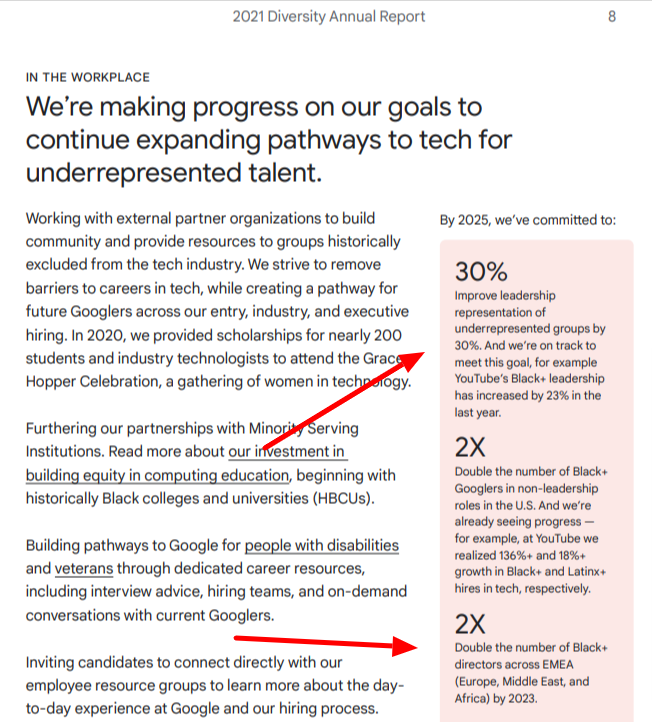
That is a clear indication that Google has identified underrepresentation as an issue and has taken steps to address it, which is commendable as it will hopefully lead to more diverse leadership in the future.
To sum up, diversity is a hot topic in today’s tech world, but it’s not just about having more women or minorities in the workplace.
It’s about creating a culture that embraces all kinds of people and backgrounds.
If the leaders aren’t diverse, your company will have a hard time fostering an environment where engineers feel comfortable expressing their ideas and opinions openly without fear of retribution or discrimination.
And that is something worth considering.
Unlearn unconscious bias
In a perfect world, we would all be able to look past our own biases and make decisions based on facts and data.
Unfortunately, our brains have evolved to make quick decisions in order to keep us safe, which can lead us to make judgments about people based on their appearance or background.
This is called unconscious bias – it’s something that everyone experiences.
Unfortunately, it can also cause us to hire the wrong people, pass over qualified candidates who don’t fit into the “norm,” and neglect to offer promotions to a well-deserved engineer who, for example, is a woman.
To explain this a little bit further, here are a few examples of unconscious bias.
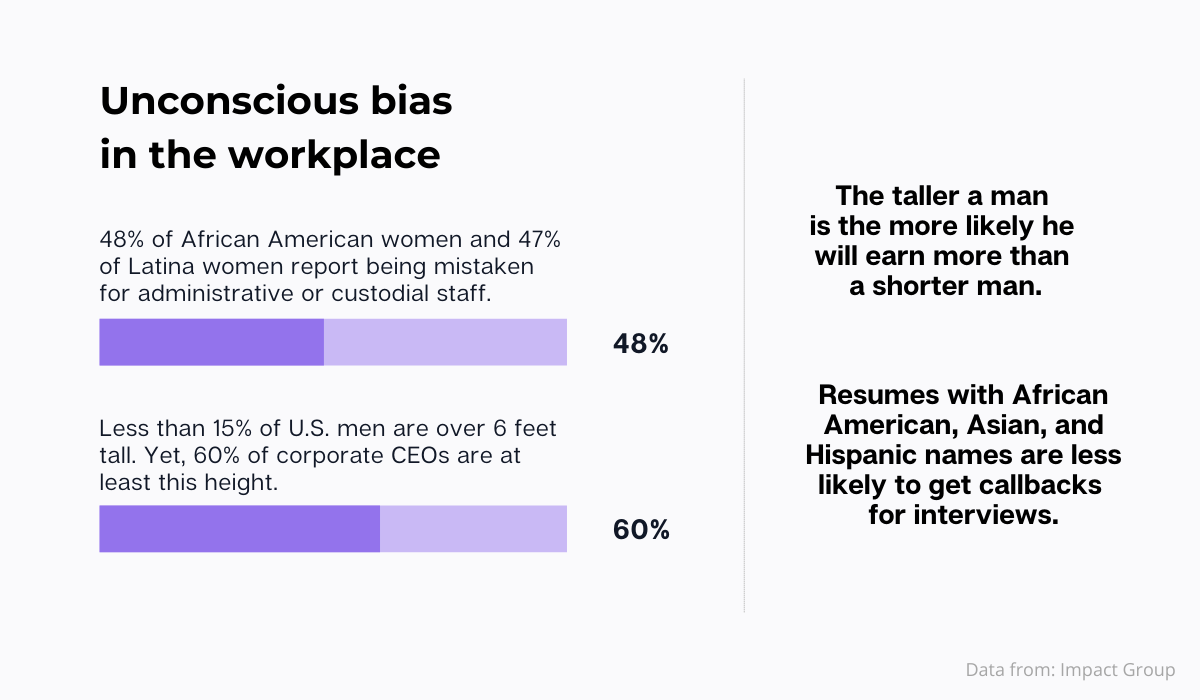
However, there are ways you can unlearn unconscious bias and ensure that everyone feels welcome in your company.
You can start by taking The Implicit Association Test (IAT). The IAT measures how quickly test-takers associate positive and negative words with certain racial groups or categories (e.g., white or black).
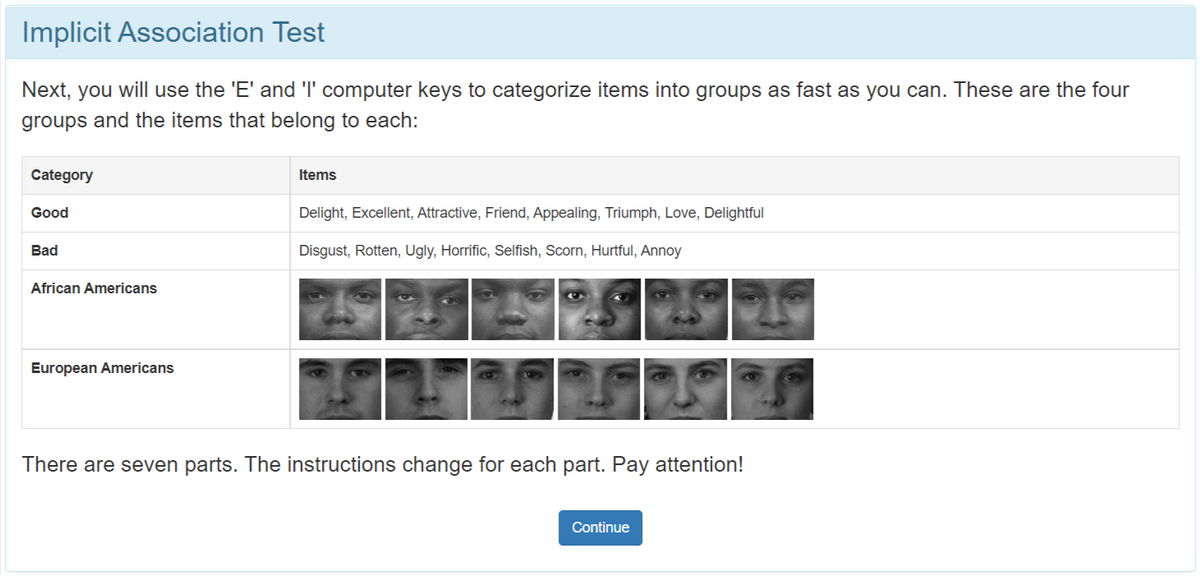
Even though the score greatly depends on the circumstances in which the test was taken, it’s still a good way to determine if your engineers show unconscious bias towards one group or another.
You can encourage your engineering team to take the test here.
After that, you can have them take training on the topic, encourage engineers from underrepresented groups to share their stories, and finally, hire more minorities.
You can also draw some inspiration from Accenture, an IT services and consulting company that lives and breathes a culture of diversity.
For starters, CEO of Accenture, Julie Sweet, was always very vocal when stating that zero tolerance for racism, bigotry and hate is one of the company’s biggest imperatives.
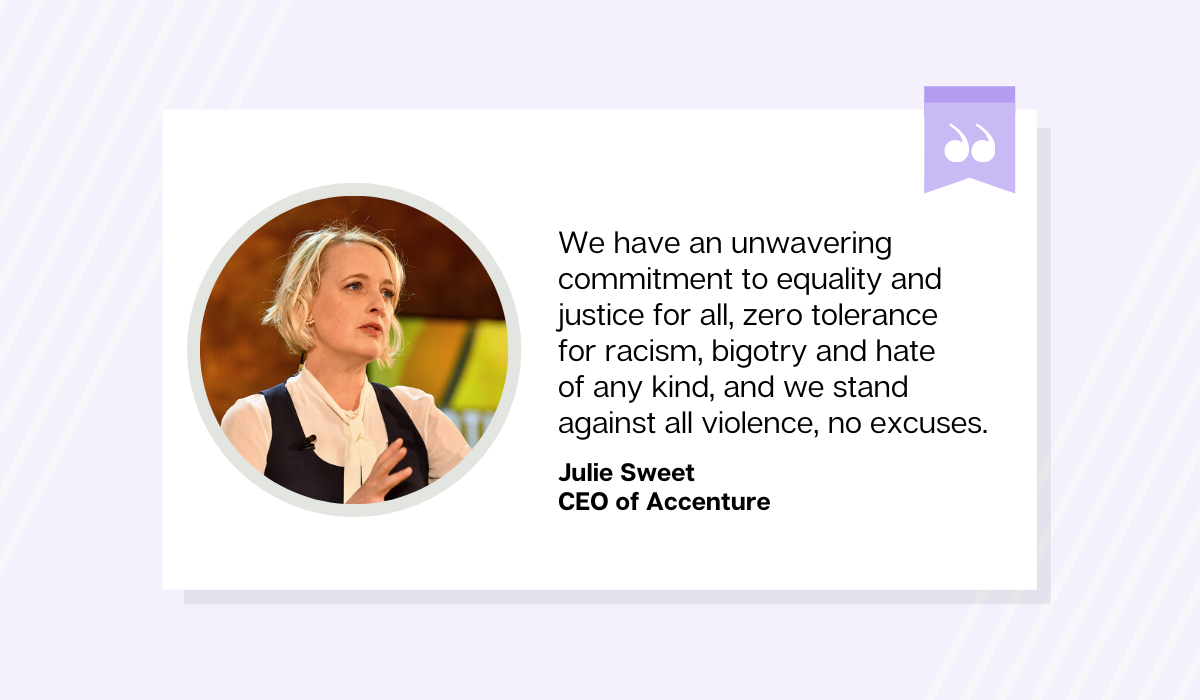
At Accenture, their diversity and inclusion efforts also include videos that show real-life scenarios and employees from different walks of life sharing their stories and challenges that they’ve faced along the way.
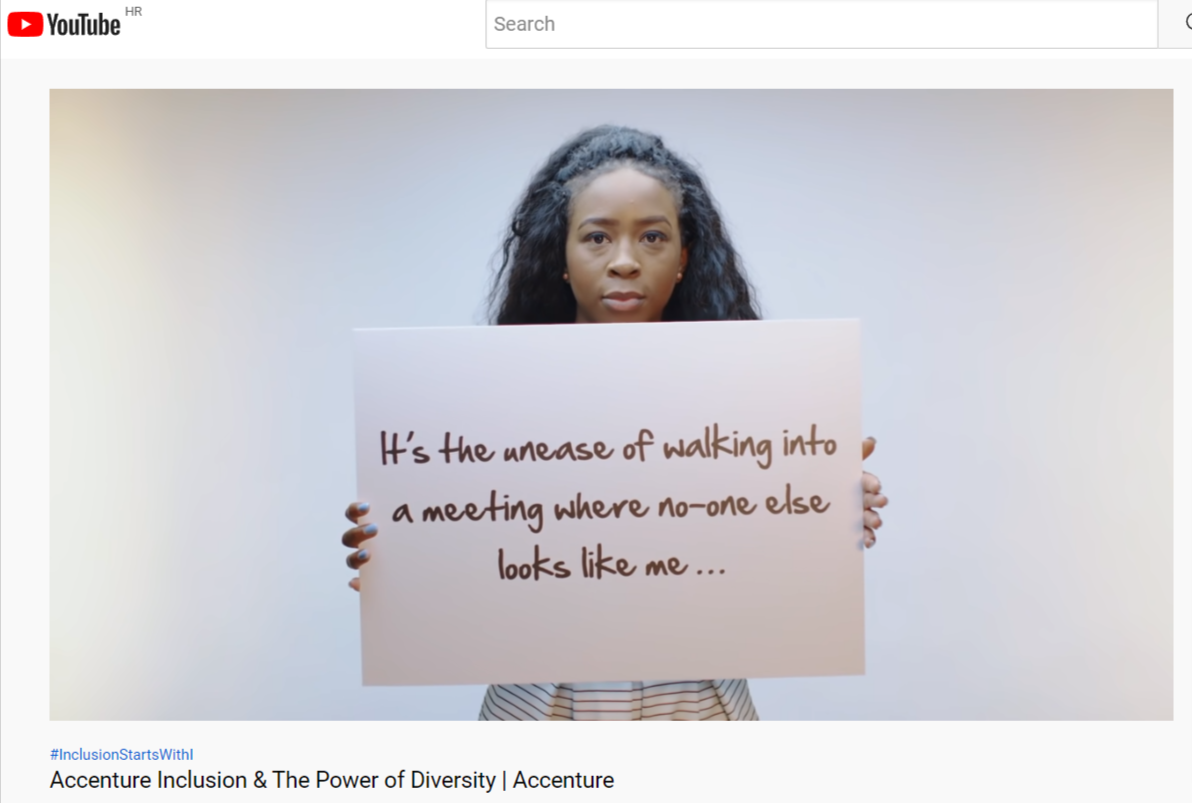
On their YouTube channel, they have a playlist dedicated exclusively to diversity and inclusion that already has 50 videos and counting.
The company also takes great pride in having a diverse board of directors.
They are committed to workplace equality, and strongly emphasize the need for equal pay regardless of gender, race, and ethnicity.
Plus, 47% percent of Accenture’s new hires are women, and 46% of its global workforce are women.
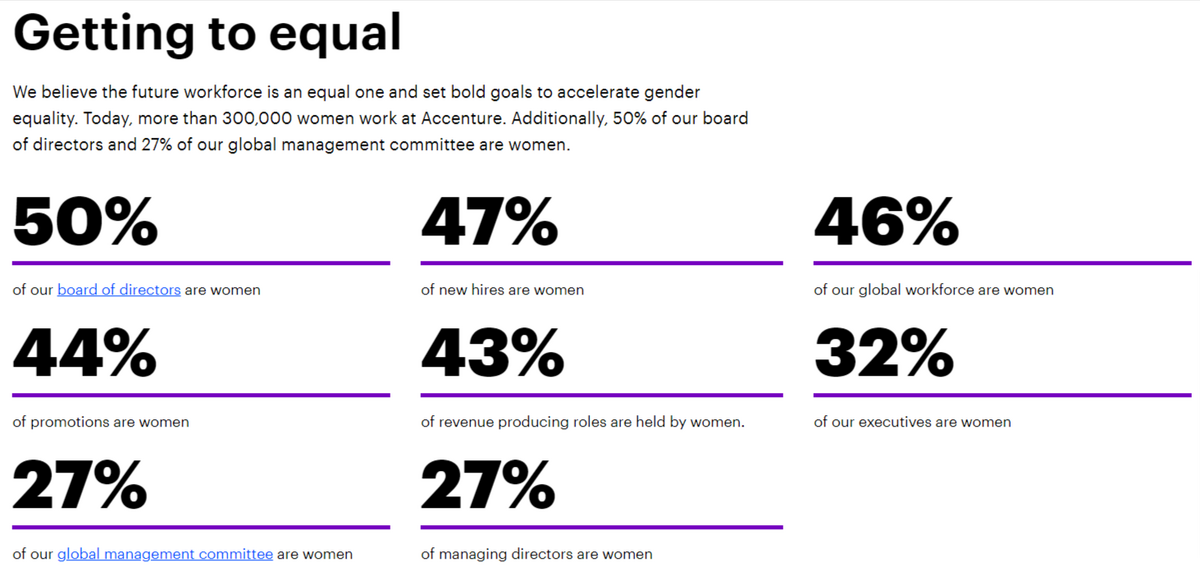
No wonder Accenture proudly tops DiversityInc’s 2022 Top 50 Companies for Diversity list!
These are all initiatives that are not so hard to implement but can go a long way in making your development agency a more fair and unbiased place to work.
Remember, you’ll probably never be able to eradicate unconscious bias fully, but you can make progress toward that goal through ongoing education and awareness initiatives, as in the Accenture example.
Perfect your onboarding process
As the software engineering industry grows, companies are looking for ways to retain their employees.
One of the major factors in employee turnover is onboarding. In fact, according to research conducted by BambooHR, the new hires’ first three months in their new job are critical for determining whether or not they will stay with the company long-term.
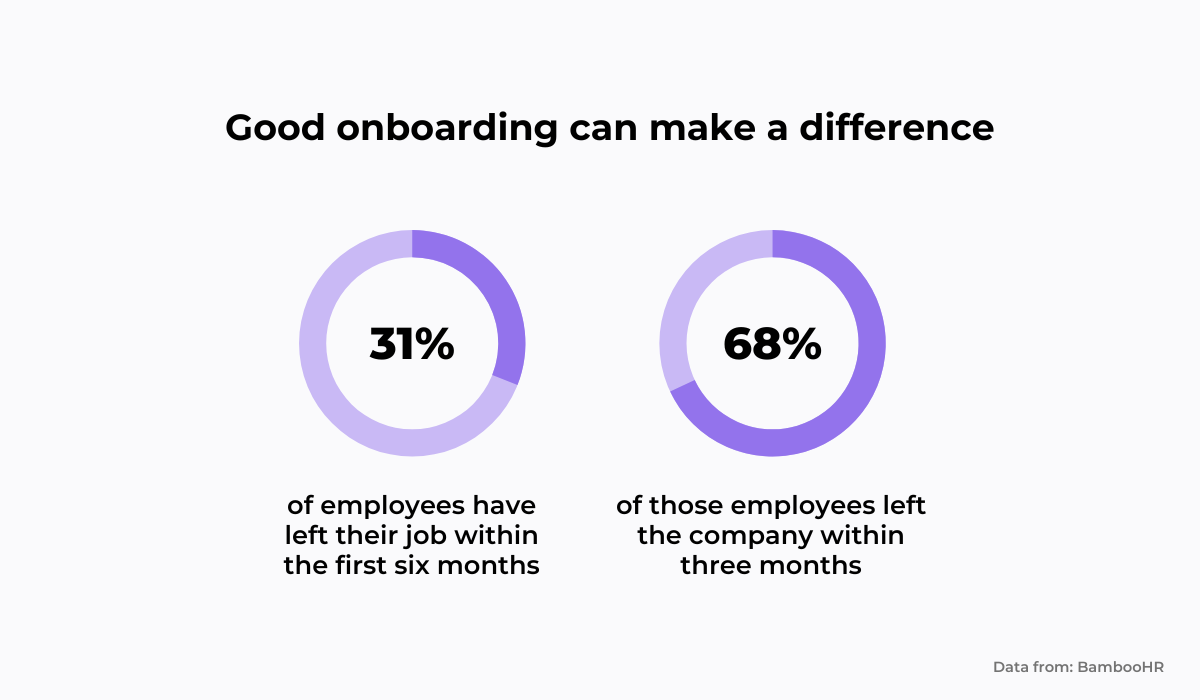
It can be difficult for new hires to break into an established engineering team, especially if they’re coming from a different background than those already on staff.
However, there are several steps you can take to make your onboarding process more inclusive and less stressful for your new engineers from minority backgrounds.
First, create a welcoming environment and include people from minority groups in your training materials.
For example, one of the first things new hires are handed over to read when they join the company is the employee handbook, or code of conduct, as it’s sometimes called.
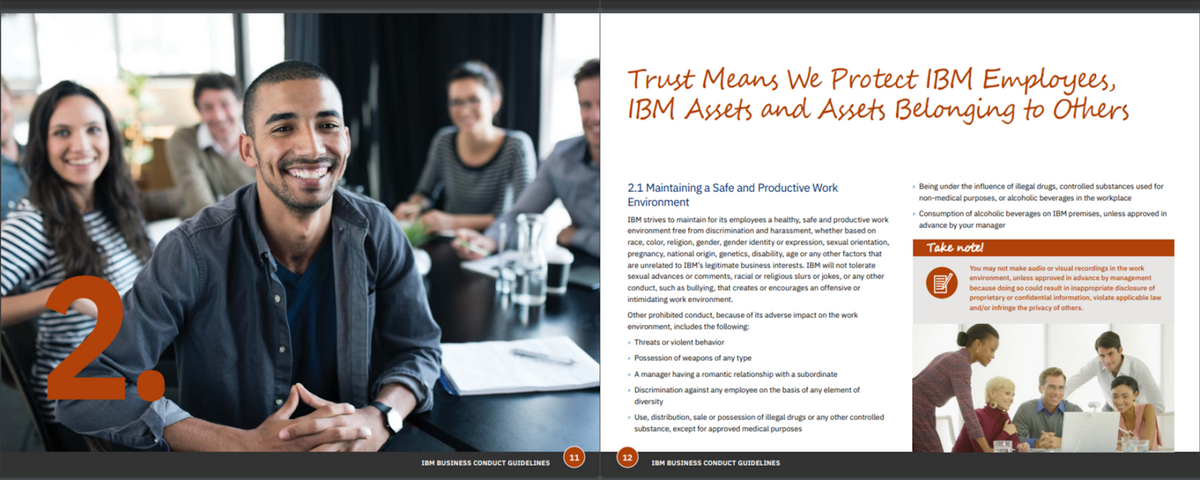
And if it includes pictures of people of different gender or ethnicity, as in this example from IBM, chances are your new employees will feel like they’ve come to a company that supports diversity.
Another good way to diversify your onboarding process is to celebrate cultural heritage months.
For example, Carbon, a 3D printing technology company, not only celebrates months such as Black History Month, Asian Heritage Month, and National Hispanic Heritage Month but also gives voice to employees from different walks of life on their social media during those months, as you can see on the Twitter post below.
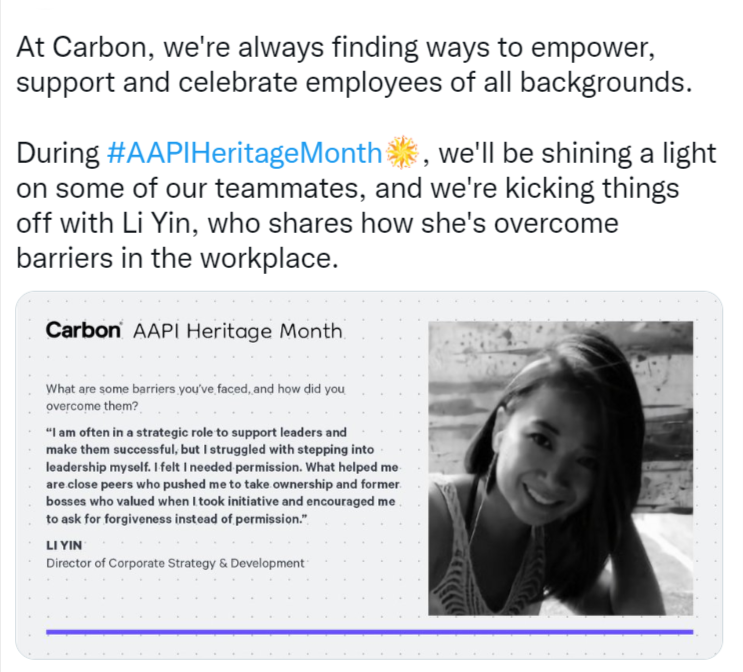
When new engineers from underrepresented groups, especially women, see that the company celebrates diversity in such an empowering way, they’ll most likely conclude that it’s a place where they’ll feel supported and valued.
Additionally, It’s not uncommon for minority engineers to struggle with feelings of isolation, confusion, and lack of confidence during their first few months on the job.
Therefore, development agencies should also consider implementing a buddy system that can help alleviate some of these issues by matching those engineers with colleagues who can support them during their first few months on the job.
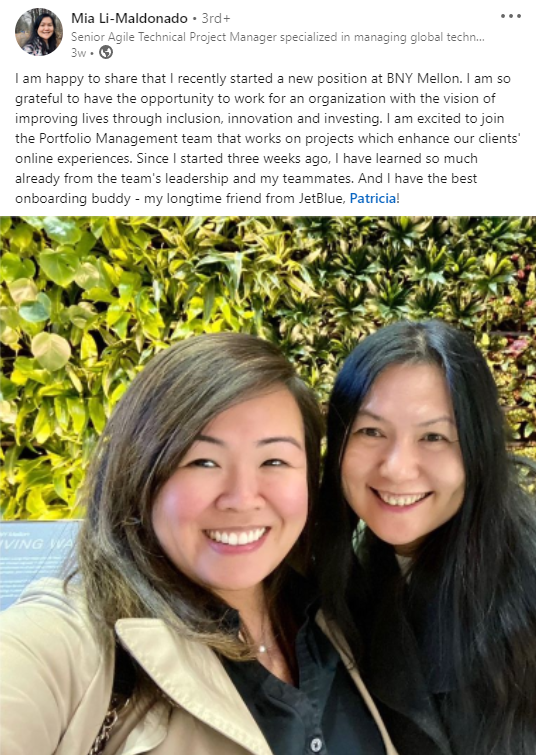
This will ensure that each new engineer has an ally on the team who can give them advice, encourage them and help them succeed at their job.
As you can see, onboarding is about more than just setting up an employee’s email account or giving them a tour of the office.
It’s an opportunity to help new engineers from different backgrounds feel welcomed, valued, and prepared for success.
And if you do it right, they’ll feel like they belong at your company and are more likely to stick around.
Provide sponsorship to your employees
It’s no secret that software engineering is a homogeneous field. Women account for about 30% of the tech workforce, while Black workers account for 9%, and Hispanic 8% of employees in the STEM field.
It’s a problem that’s been on the minds of tech leaders for years, but it’s still an issue today.
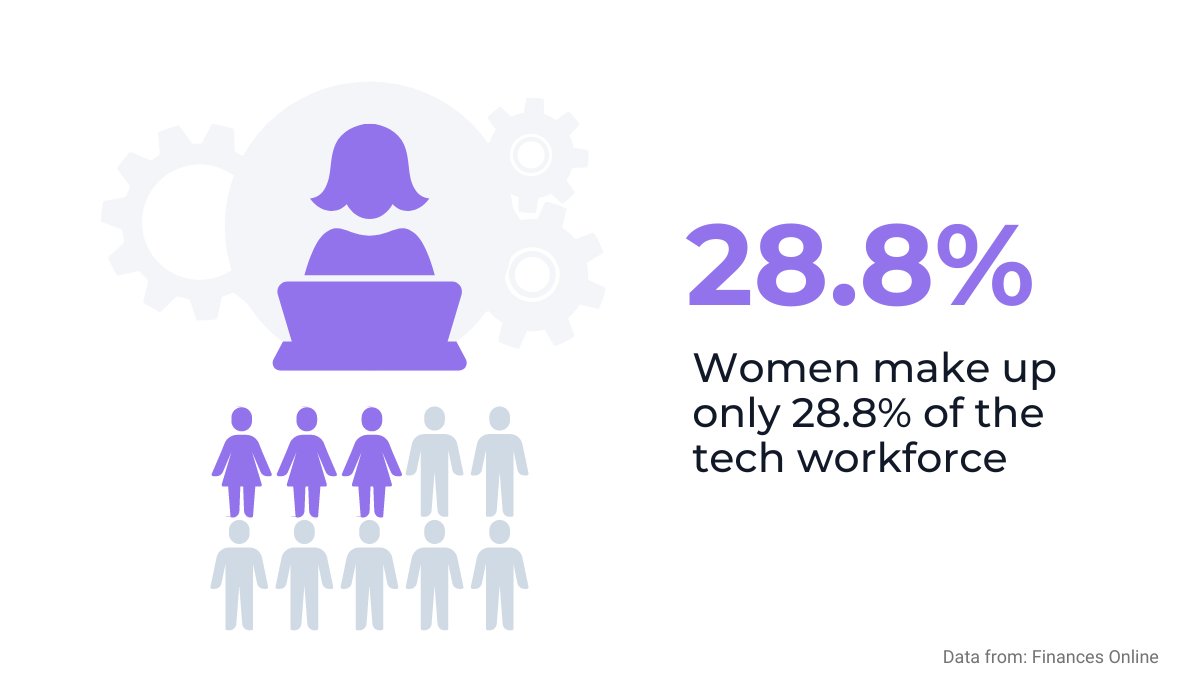
And sponsorship just might be a solution.
But first, who exactly are the sponsors?
By definition, sponsors are senior leaders who, in addition to giving advice and guidance, use their influence and position to advocate for the person they’re sponsoring.
Sponsors and mentors are important because they can open the doors for their protégés and give them access to opportunities that may otherwise be closed off.
And to comprehend just how valuable sponsorship can be for increasing diversity, let’s look at the statistics that showcase the powerful effect it can have on women in tech.
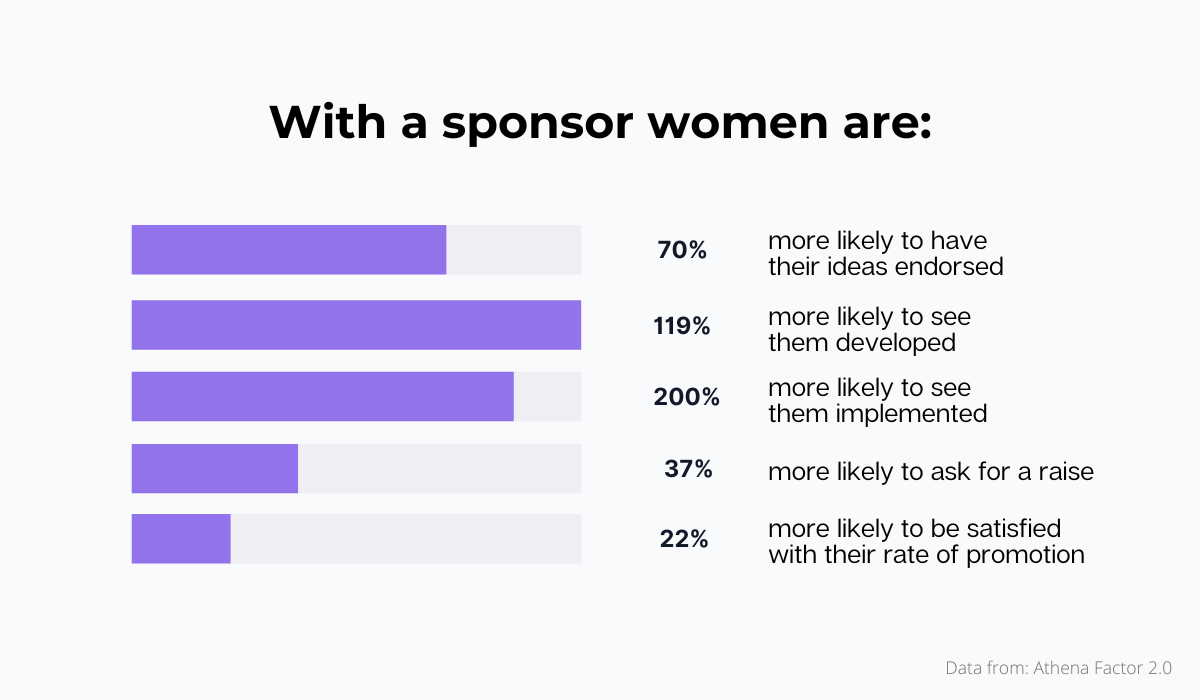
But where can women and other underrepresented groups find a sponsor that’ll help them advance in their careers?
Let’s see how Terence Guiamo, head of Inclusion and Diversity at PwC, describes this process and how the company tackles this issue to create a more diverse culture.
“What usually happens is that a senior partner takes a newcomer under his wings, because he reminds him of his younger self. That system obviously doesn’t work if you want to create more diversity and inclusion.”
So instead of relying on this informal process, PwC came up with a more structured sponsorship program where managers coming from minorities are paired with sponsors.
And sponsors are senior partners in the company who help them move on the corporate ladder towards senior leadership positions.
As PwC, many other companies jumped on this train ride recognizing sponsorship as an excellent opportunity to improve diversity and inclusion.
Salesforce, a software company that provides CRM services, is one of those companies.
They decided to focus on Black women due to the fact that they experience microaggressions more often and have less access to sponsorships.
Therefore, they’ve created a special sponsorship program aimed at connecting Black women with leaders who can advocate on their behalf.
And how sponsorship can be a great way to make real changes in the company when it comes to equal pay, you can read in an inspiring story told by Moly Ford and Leyla Seka from Salesforce.
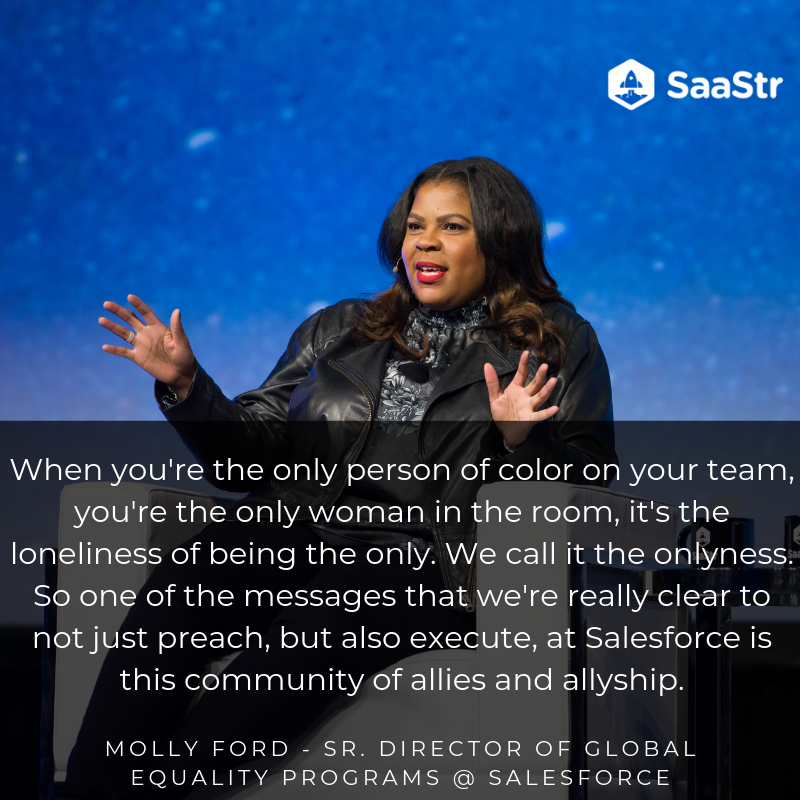
This story proves that sponsorship can be a powerful tool for advancing women’s careers and helping them thrive – both professionally and personally.
It also speaks volumes of how, by sponsoring minority-group engineers, you can help them develop the skills they need to succeed in the competitive tech environment while also ensuring they are supported through their journey.
Create a roadmap to promotion
Promotions are a great opportunity to reward your engineers and recognize the work they’ve done.
However, if you don’t have a roadmap to promotion in place, you are leaving your decision-making to chance and opening yourself up to bias.
So what exactly is a road map to promotion?
Simply put, it’s a career progression plan, a set of criteria that helps you decide who gets promoted.
Its goal is to turn promotion into a standardized process so that all employees, regardless of their backgrounds, can get a fair chance to compete for promotion.
And in the picture below, you can see a simplified infographic of a career progression plan.
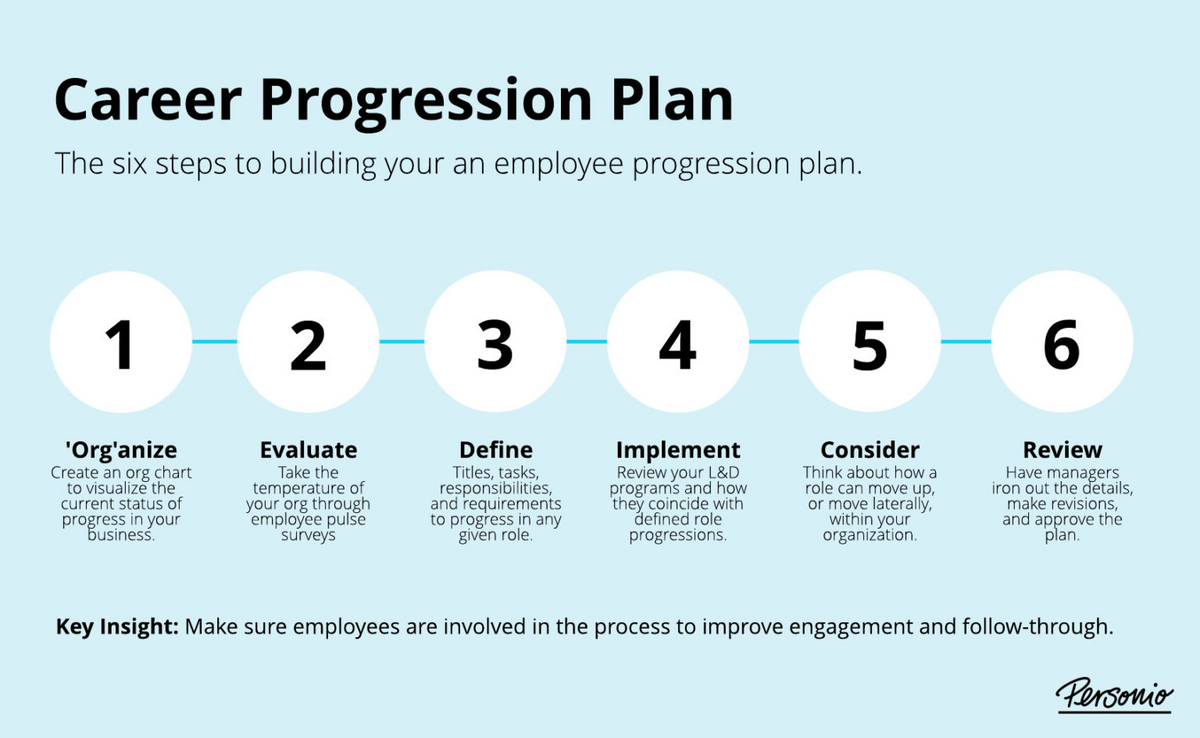
In this picture, the roadmap to promotion has six steps, but it’s up to you and your development agency to structure it according to your needs.
To make the whole process even more standardized and even less biased, you can opt to harness the power of technology.
For example, Profit.co is one of the tools that can help you track every aspect of engineers’ performance: how much they’ve contributed over time, what projects they’ve worked on, how much time they spend on each project, and in different aspects of the job (e.g., front-end vs. back-end).
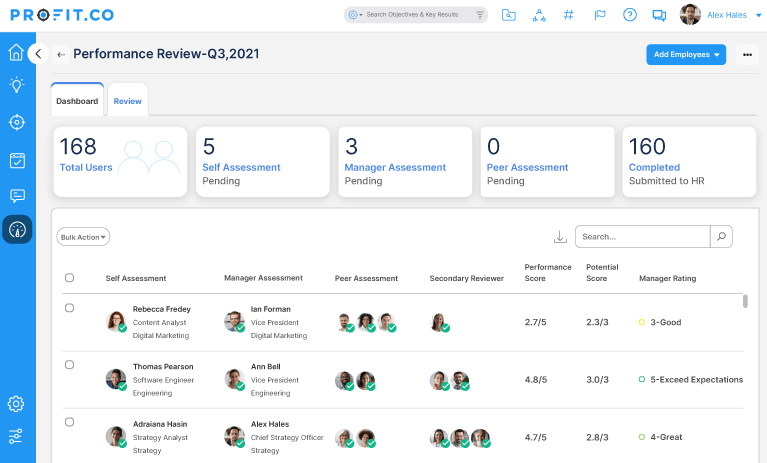
It also enables you to perform 360-degree feedback, as you can see in the picture, a process where all engineers are asked to give reviews about their fellow peers.
This way you can find out how others perceive your engineers’ strengths and weaknesses before deciding who is the best fit for the open position.
Remember, if you want to retain a diverse engineering team, it’s important that the whole promotion process is as transparent as possible so that your minority-group engineers know what promotions are available, how they can apply for those positions, and when there will be an opening.
That way, you will be able to create a strong workforce where everyone will have equal chances for promotion, and where characteristics like gender, race, or ethnicity will no longer be an obstacle to success.
Understand that improving diversity is a journey
The truth of the matter is that improving diversity is a long process that doesn’t happen overnight. There are no silver bullets and no quick fixes – it’s a long-term journey.
However, there are some continuous efforts that you can make on this journey, and one of them is undoubtedly Employee Resource Groups (ERG).
ERGs are groups of employees who come together for the purpose of supporting each other.
They are often formed around shared experiences or interests, such as ethnic or gender identity, sexual orientation, disability, or veteran status.
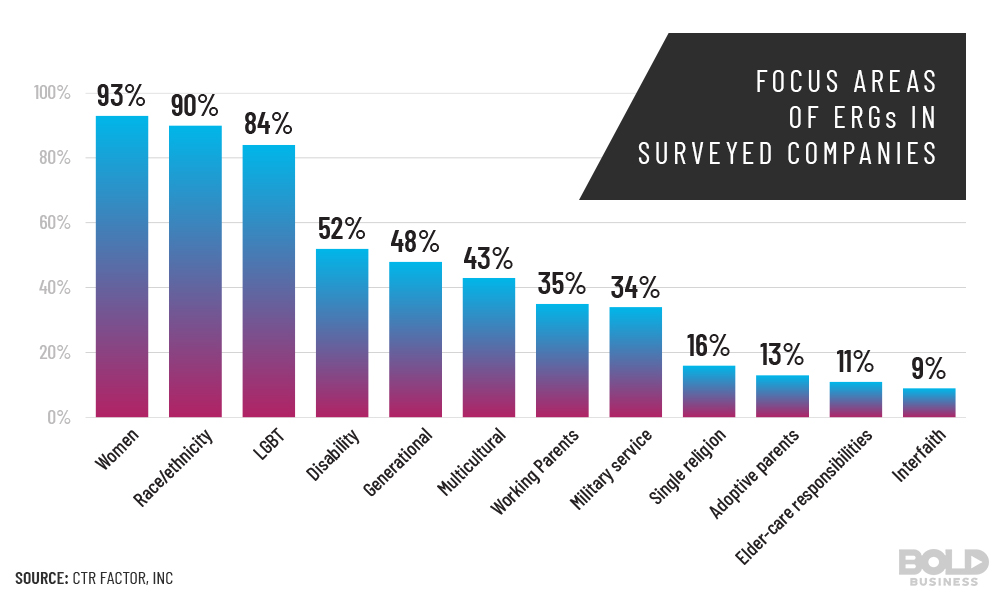
For example, you might have an Asian American ERG that provides social events and networking opportunities to help its members find common ground.
You could also have a Women in Tech ERG that focuses on building relationships between female software developers and encouraging them to see each other as allies in their field.
For instance, KLA, a capital equipment company, has a pretty active ERG called Women In Stem Empowered (WISE). And when it comes to gender equality in the workplace, these ladies mean business.
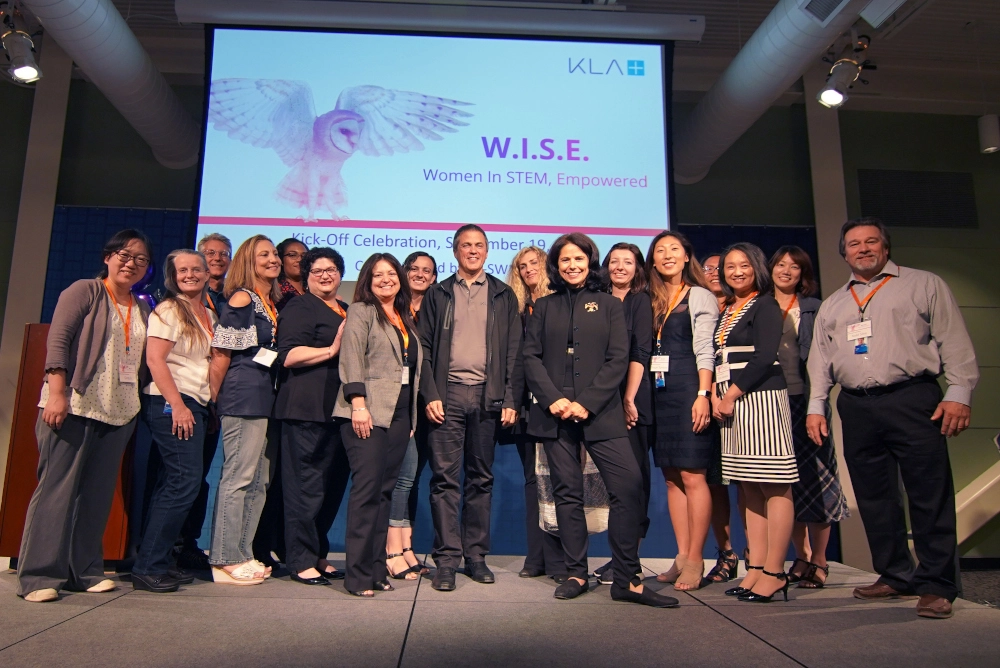
Their main goal is for women in the company to have a place where they feel supported by their colleagues, rather than isolated within their own department.
But their activities don’t stop here.
They organize diversity initiatives, events, talks, and training inside and outside the company about bias, awareness, community engagement, and the importance of gender equality.
Additionally, they are funding other women entrepreneurs worldwide to help them pursue their dreams.
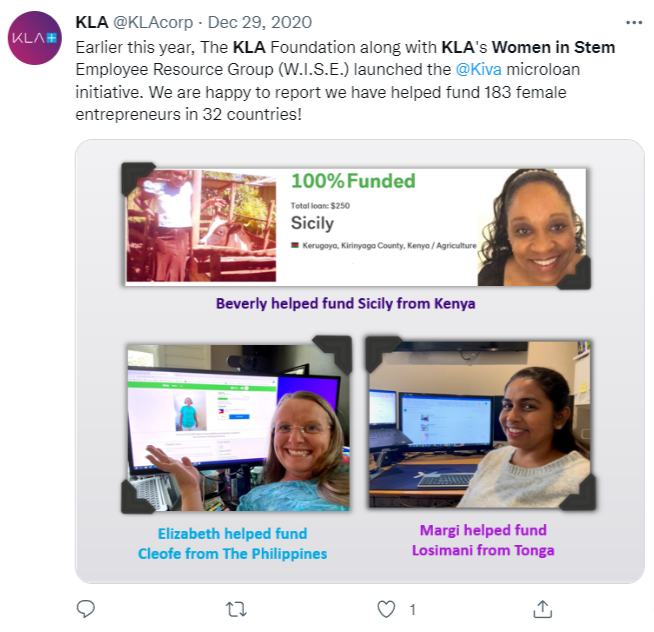
That way, they are slowly but steadily contributing to creating a more diverse and inclusive culture in the company.
As you can see from the KLA’s example, training, programs, and events can also be a great way to promote diversity.
But for that, you shouldn’t rely just on the enthusiasm of ERGs members. If you want to show that you truly support diversity, you should organize them yourself.
These can include an annual conference on unconscious bias in software engineering or a program that helps women apply for leadership tech positions.
The most important thing is that you understand that no matter how small or insignificant your initiatives may seem to you, they’ll all add up in the long run and make a big difference in motivating your engineers to stay with your company.
Conclusion
When it comes to retaining diverse software engineering teams, it’s not just about hiring people of different backgrounds and cultures – it’s also about building an inclusive environment where everyone is valued.
Diversity in tech is a complex issue with many contributing factors, but there are things companies can do to create a diverse culture, as we tried to outline in this article.
However, there’s no one-size-fits-all solution to this problem.
But we hope that we’ve managed to inspire you at least a little bit to start building a more inclusive environment in your software engineering team – one where everyone feels welcome at every stage of their career.
